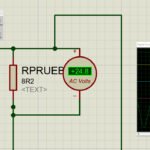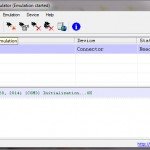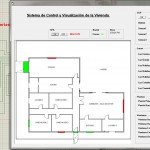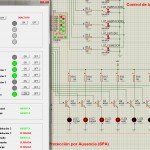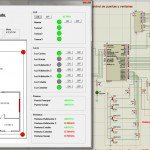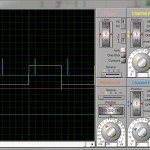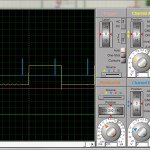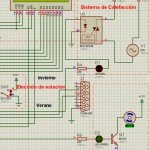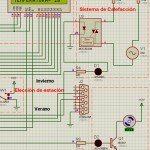Public info about the author: Gojorgego
- Profile
-

350 W RMS Proteus simulation of a Mosfet Amplifier
-

In this project there are 4 circuits controlled by a PIC16F877a. The lights are replaced with LEDs. In addition to the contol lights, the PIC checks the state (open-close) of doors and windows. The sensors are replaced with switches. A simulation of presence system (SSP), turn on some lights of the house, when one or more motion sensors in the garden are activated. A protection system for absence (SPA) disconnect the electrical elements, in our case, the lights of the house. A graphical user interface, built with Visual BASIC 6, communicates with the proteus project through a virtual serial port. The user can enable or disable the control systems manually with switches or by the graphical interface.
-

The module, implemented with a PIC 16F877a, consists of 4 circuits, light sensors,a zero crossing detection circuit, the brightness system control and the serial communication circuit. The crossing detector circuit let us to synchronize the PIC with the AC network, detecting the zero crossing of the voltage. The brightness controller is implemented via software with a pulse that drives the triac through an optocoupler MOC3021. The source code is compiled by PIC C compiler.
-
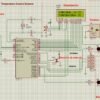
SPICE simulation of a Temperature Control System Module implemented with a PIC16F877A. This is a module of a centralized home automation system. The temperature is measured by the sensor LM35, the setpoint and current temperature values are shown on a LCd display. The PIC drives a heating system and a ventilation system. On “winter position” of the switch, if the temperature drops below the winter setpoint temperature, the module turn on the heating system, and turn it off when the temperature exceeds the setpoint value. On “summer position”, if the temperature is higher than the summer setpoint temperature the PIC turn on the ventilation system and turn it off if the temperature drops down the setpoint value. The C source code is compiled with PIC C compiler.



